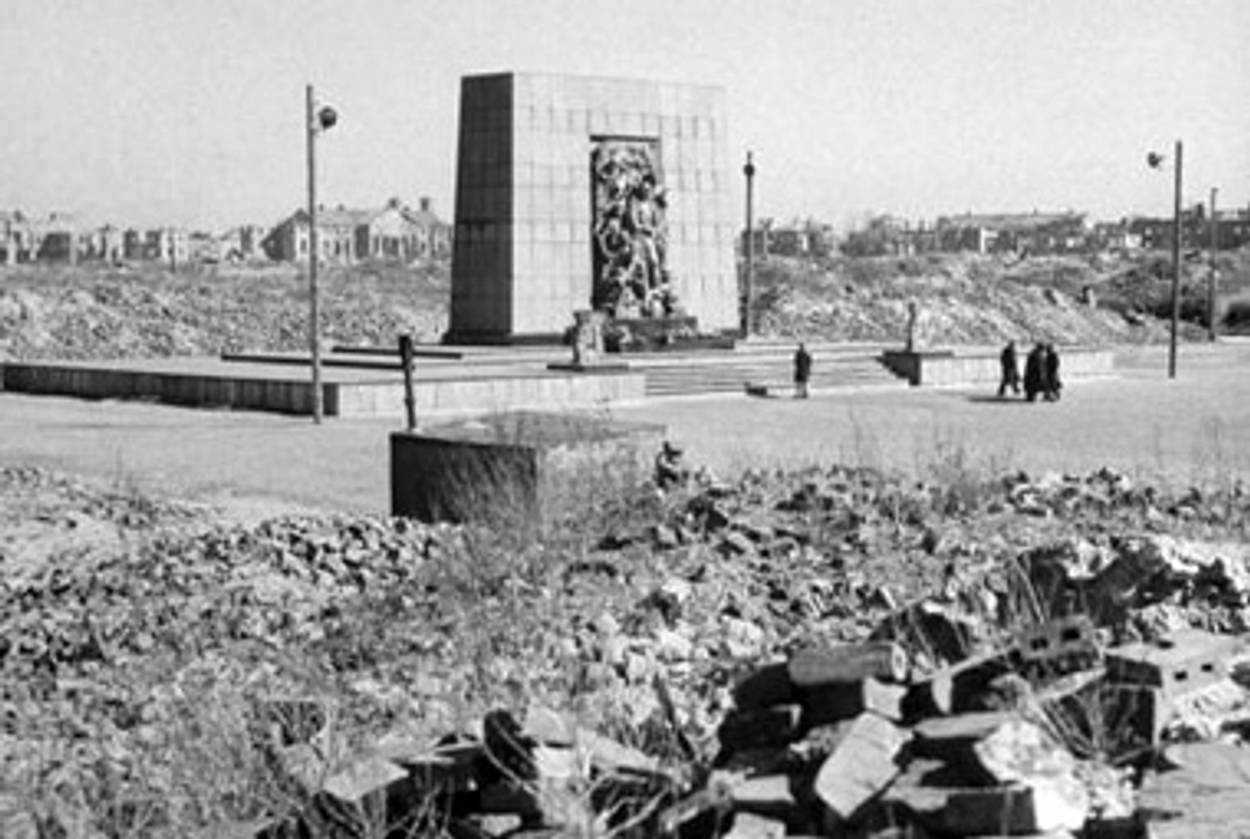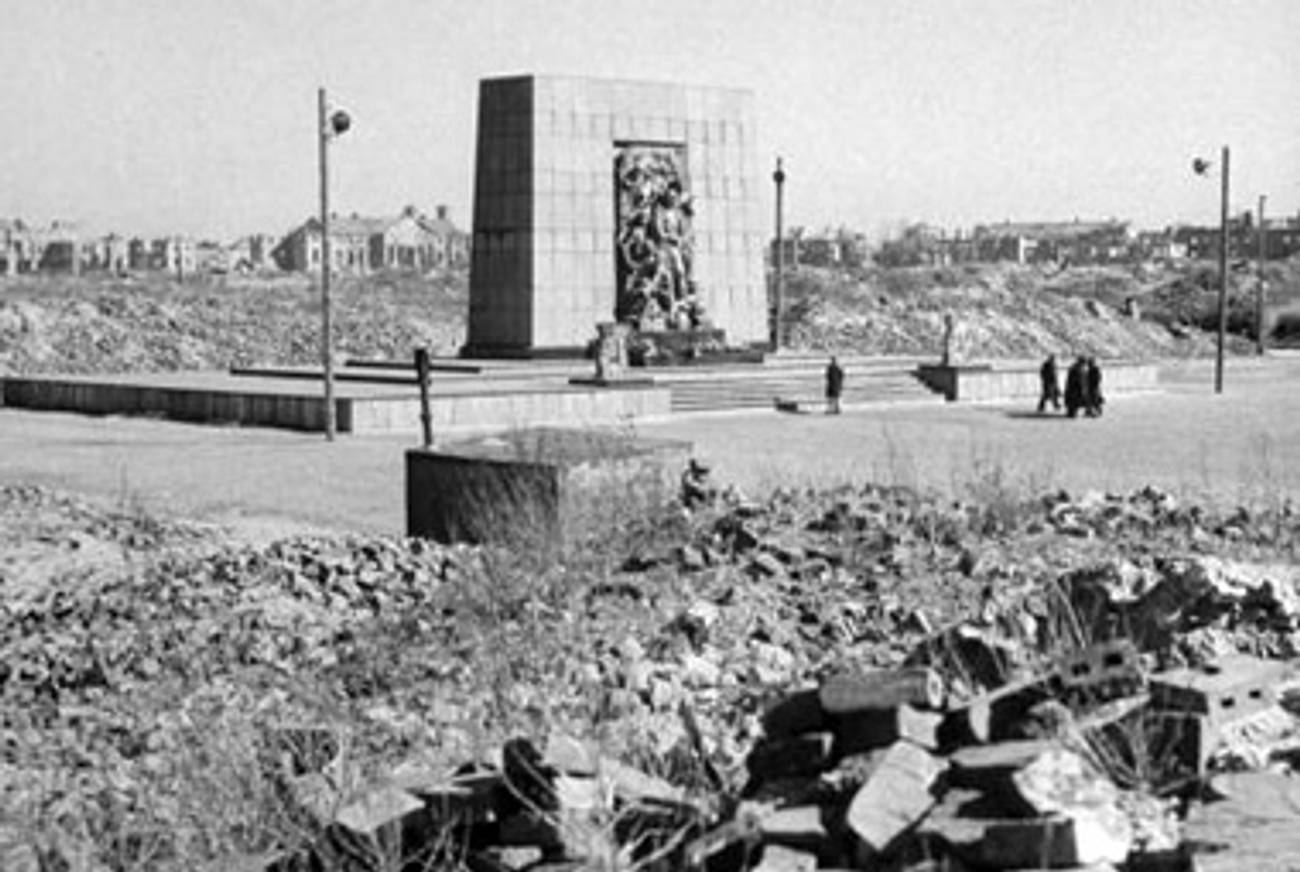All Quiet
Were postwar American Jews really ‘silent’ about the Holocaust?




In her new book, We Remember With Reverence and Love: American Jews and the Myth of Silence after the Holocaust, 1945-1962, Hasia Diner sets out to drive a stake, once and for all, through the heart of a historical falsehood that has proved remarkably durable. This is the notion that, as Diner’s subtitle has it, American Jews were initially “silent” about the Holocaust—that the greatest catastrophe in Jewish history was somehow swept under the rug of American Jewry’s collective consciousness. The theory is that the desire to assimilate into mainstream American life, the fear of being associated with the victims of genocide, and the imperatives of anti-Communism, which turned postwar Germany into an ally of the United States, all discouraged American Jews from talking openly about the death of the six million. Not until the 1960s, the conventional wisdom has it, did American Jews find the courage to speak openly about the Holocaust, emboldened by the Eichmann trial and especially by the victory of Israel in the Six Day War, which dispelled the lingering image of Jewish helplessness that the Holocaust had created.
Diner, a professor of American Jewish history at New York University, shows through extensive quotation that “nearly every historian, literary scholar, and cultural critic … maintains that America’s Jews had little interest in thinking about, engaging with, and memorializing the Holocaust.” She suggests that the historian Leon Jick was the first to make this claim, in 1981, writing in highly loaded terms that American Jews “collaborated or at least acquiesced in a campaign to make the world forget” the Holocaust. Historians of all schools and political persuasions accepted that interpretation:Nathan Glazer, Seymour Martin Lipset, Alvin Rosenfeld, Gerald Sorin, Alan Mintz, and Edward Alexander are among the prominent writers whom Diner cites repeating the “myth of silence.”
But Diner is especially exercised by two recent, controversial books, Peter Novick’s The Holocaust in American Life and Norman Finkelstein’s The Holocaust Indsutry, which show that the “myth of silence” is of more than just historical significance. For Novick and Finkelstein, whom Diner describes as “harsh critics of American Jewry from the left,” the silence of postwar Jews, broken only by the Israeli victory in 1967, leads to the conclusion that contemporary American Jewish interest in the Holocaust is inauthentic and exaggerated—or worse, a right-wing stratagem to force Jews to fall in line behind Israel. “Between the end of the war and the 1960s,” Diner quotes Novick as recalling, “the Holocaust made scarcely any appearance in American public discourse, and hardly more in Jewish public discourse.”
This idea is so entrenched that it will be hard to uproot. But I don’t see how any reader of Diner’s exhaustively and innovatively researched book could possibly continue to believe in the “myth of silence.” For We Remember With Reverence and Love records thousands of Jewish voices—rabbis, community organizers, fundraisers, journalists, lobbyists, labor leaders, high school students—from the period 1945-62, all talking, passionately and unstoppably, about the Holocaust. There is little narrative in Diner’s book; rather, as in a legal brief, there is a succession of exhibits, from the press releases of the American Jewish Committee right down to the literary magazine of the Reform summer camp in Oconomowoc, Wisconsin, each adding weight to Diner’s historical case. “The Jews of America,” she writes, “rather than ignoring the Holocaust, opened up the possibility of fitting it into their communal lives.”
The central insight driving Diner’s research is that the “word ‘memorial’ need not have been present in every text, on every page, in every pageant, concert, speech, or artifact,” for such texts and artifacts to be considered part of American Jews’ work of memory. In fact, only Diner’s first chapter focuses on Holocaust memorials and monuments, such as the one that was supposed to be erected at 84th Street and Riverside Drive in Manhattan. The cornerstone for the “American Memorial to Six Million Jews of Europe” was laid as early as 1947, by New York’s mayor, in a grand public ceremony—vivid proof that New York’s Jews were hardly ashamed of discussing the Holocaust in public.
A design was commissioned for a 60-foot pylon topped by a menorah, but Robert Moses, New York’s public-works czar, quashed the plan. In the following years, a series of funding problems and bureaucratic squabbles meant that nothing was ever built. A particular complication facing the New York monument and others planned in the United States, Diner shows, was the firm opposition to all such projects by Yad Vashem, which insisted that “the land of Israel is the only and right place where such a significant monument should stand.”
The failure of the Riverside Drive memorial is no great loss—and not just because it’s hard to imagine such a rhetorically grandiose monument in such a quiet residential neighborhood. Rather, stone and marble may simply be the wrong medium for preserving the memory of such enormous loss and suffering. More eloquent are the yizker bikher—memory books, produced by landsmanshaftn to record the lives of their old communities, now wiped out by the Nazis; the adoption by American synagogues of Torah scrolls and other objects salvaged from wrecked German synagogues; and the dedication of trees in the “Martyr’s Forest” in Israel. Then there were the memorial readings added to Passover seders, and even the attempt, during the 1950s, to turn the minor Jewish fast day of the Tenth of Tevet into a Holocaust remembrance day. That effort faltered after Israel designated the 27th of Nisan as Yom HaShoah, to commemorate the Warsaw Ghetto uprising. Indeed, as early as 1945, Diner shows, Jewish groups marked the anniversary of the Warsaw Ghetto uprising with memorial services, which New York’s Governor Thomas Dewey attended.
But explicitly memorial activities are just the tip of the iceberg that Diner reveals. Almost every aspect of organized Jewish life, in the years after 1945, was touched by the memory of the Holocaust. Jewish cultural organizations immediately began sponsoring research into the history of the catastrophe. The American Jewish Committee published a series of historical and sociological books under the rubric “Studies in Prejudice.” The Jewish Labor Committee and the Joint Distribution Committee sent researchers to the displaced-persons camps to interview survivors and gather documents. The Claims Conference, which represented Jewish groups negotiating for reparations from Germany, was another major sponsor of Holocaust research. Indeed, so much was written on the subject that, already in 1958, Diner finds one writer observing that “the Jewish persecution and extermination by the Nazis [has] in the course of years created a vast literature.”
Far from ignoring the Holocaust, Diner makes clear, the major institutions of American Jewish life made it their mission to record the terrible history and to make sure the world knew about it. Nor did Jews shy away from invoking the Holocaust in contemporary political debates. It was central to the American Jewish reaction to the fate of Jews in DP camps after the war, to the the British ban on immigration to Palestine, and above all to the creation of the State of Israel in 1948. In 1946, the Zionist propaganda show A Flag Is Born ran for three months on Broadway; its explicit theme was the need for a Jewish state to receive the survivors of the Holocaust. (Marlon Brando, unlikely as it seems, played David, a Jewish refugee.)
Again, when Jewish organizations and individuals spoke out against postwar rapprochement with West Germany, or protested the Berlin Philharmonic’s American tour under the pro-Nazi conductor Herbert von Karajan, or fought back against the American Nazi Party’s provocative tactics, they did so by invoking the memory of the six million. (Not even the discovery that “a local manufacturer of toy model airplanes was using swastikas on his reproductions of certain German airplanes” was deemed too trivial for the Synagogue Council of America to protest.) And of course, for many American Jews, a commitment to liberalism and to the civil rights movement was a direct result of the experience of the Holocaust.
So pervasive does Diner find the Holocaust to have been in postwar American Jewish life, that it becomes a mystery how the “myth of silence” ever gained credibility in the first place. Diner devotes her conclusion to this question, suggesting that the upheavals of the 1960s are to blame. As young Jews rebelled against their parents and experimented with a new kind of ethnic identity politics, they “considered American Jewish institutions to have become too consensus-oriented, too unwilling to assert Jewish distinctiveness, and too concerned with avoiding confrontation with others.” The Holocaust became the major battleground for this generational revolt: “the leaders of the community institutions,” the new generation held, “had so lusted after acceptance into a corrupt America that they forgot the lessons of the Holocaust.”
Yet Diner is perhaps too ready to blame the 1960s generation. After all, We Remember With Reverence and Love is full of examples of the harsh and frightening ways the Holocaust was taught to young Jews in the postwar period—that is, to the very children who would grow up to be the rebels of the 1960s. At Yeshiva Flatbush, in 1949, children were “taught the catastrophe by having students construct, as a Passover project, a replica of a concentration camp.” At the Reform summer camp in Oconomowoc, in 1961, teenagers staged a reenactment of the Eichmann trial, before moving on, in a sign of the times, to “a role-play staging of the history of racial oppression in America.” One wonders what the campfire sing-alongs sounded like.
How could American Jewish children, born after the Holocaust but raised with an excruciating consciousness of their guilt and their luck, possibly respond to such a birthright? How else but by proclaiming that they alone were fully equal to the burden of memory—that where their parents, who lived through the time of the Holocaust, were silent, they would speak out? Perhaps the “myth of silence” was a necessary stage in American Jewry’s ongoing struggle to make sense of its place in a post-Holocaust world. But even if that myth once served a need, thanks to Hasia Diner’s work, it must now be retired for good.
Adam Kirsch is a contributing editor to Tablet Magazine and the author of Benjamin Disraeli, a biography in the Nextbook Press Jewish Encounters book series.
Adam Kirsch is a poet and literary critic, whose books include The People and the Books: 18 Classics of Jewish Literature.
Adam Kirsch is a poet and literary critic, whose books include The People and the Books: 18 Classics of Jewish Literature.